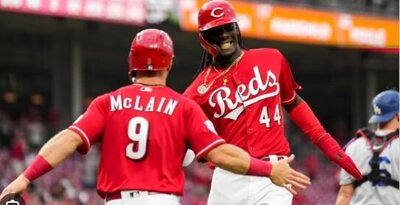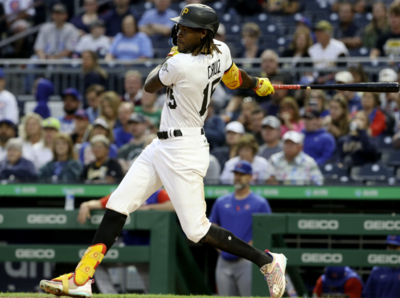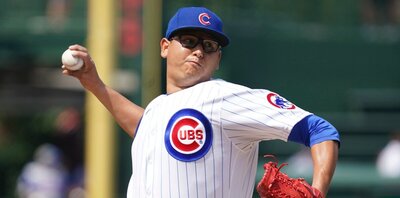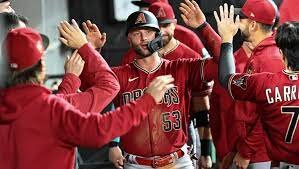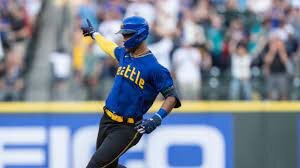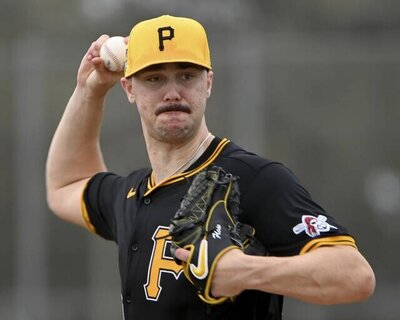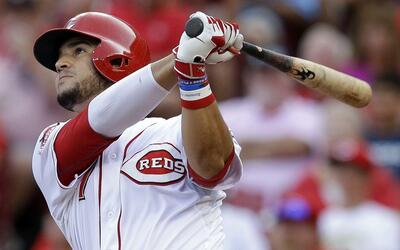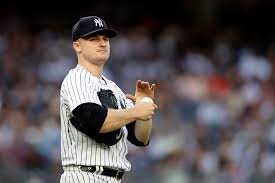NL Quick Pitch: We got some positive updates on injured NL players on Thursday. Corey Hart progressed to live batting practice and should be heading out on a rehab stint soon. His current target date to return is April 22nd. Chase Utley progressed to some light jogging. There is still no timetable for Utley's return, but this is a big first step. I'm expecting a mid-May return. Jonathan Herrera continues to out-hit expectations. After a big spring he's been hot early in the season and is stealing playing time from Jose Lopez. I'm not a big believer in Herrera's bat, but his sustained hot streak is worth riding in deep leagues, while Lopez owners will need to be patient/search for other options in the near-term. Jaime Garcia and Hiroki Kuroda weren't themselves on Thursday night as poor command led to a lot of line drives. Ricky Nolasco's career struggles with the Braves and specifically Brian McCann continued on Thursday night. Brandon Beachy's impressive spring hasn't quite carried over into the regular season, but I think he gets back on track next week. Logan Morrison picked up another extra base hit last night. His breakout is legitimate and I want him in any league I play. There were many strong pitching performances last night as Jordan Zimmermann, Cliff Lee, Bud Norris, Dustin Mosely, and Randy Wolf all pitched well. Cliff Lee's big K Rate jump early on has him making a run at the #1 SP overall. Norris is a perpetual tease worth keeping an eye on, while Zimmermann is the most intriguing long-term bet of the mid-rotation SPs that pitched well last night. Randy Wolf continued his trend of struggling at home and having mild success on the road. He's still too dangerous to rely on consistently.
Ted Lilly (SP - LAD): It hasn’t been a particularly encouraging start to the season for Ted Lilly. Despite pitching in favorable environments in his first three starts (vs. SF, @SD, @SF), Lilly sits with a 6.00 ERA, 1.53 WHIP and unappealing 4.80 K/9. At age 35, Lilly’s relying on guile and pitching environments to get by. His average fastball velocity is 85-86 mph and his extreme fly ball tendencies (typically 45-50%) have made him a bit more environment dependent; as indicated by his splits last year with the Dodgers (3.98 FIP) and Cubs (4.46 FIP). The question now is: after being great with the Dodgers down the stretch last year (3.52 ERA, 0.96 WHIP), what’s so different to start this season? Lilly’s pitched in good parks, against middling offenses, so why is he struggling so much? Well let’s start with some of the things that look the same. Lilly’s velocity continues to trend down, but isn’t all that different from last season. He was at 86.8 mph on average FB velocity last year and is at 85.9 mph early in the season. At 86-87 mph the last two years he produced run values of 19 and 24 runs above average with his fastball. I have a hard time imagining the 1 mph difference is the issue. Early on in the season Lilly’s also getting hitters to chase consistently. Last year his chase rate (outside zone swing rate) was strong at over 31%. This year he’s upped it to nearly 36% early on. So velocity is still in the same neighborhood and his ability to fool hitters is still strong, these are good signs for his long-term value. Now let’s get to the areas where we’re seeing some differences. Lilly’s opposing contact rate is up early in the season, both inside (91.4% vs. 81.5%) and outside (96.5% vs. 85.3%) the zone. In addition he’s allowing more line drives early in the season (21%) than he did last season (18%). These numbers could either indicate the stuff isn’t good enough to generate whiffs or Lilly’s command is off. For me, the ability to fool hitters (get swings outside the zone) shows the stuff is still fine (or at least consistent with years past), but the command appears to be a problem. There’s also a bit of precedence for this. Last May in this space I noted Lilly’s dropping velocity and dropping K Rate (at the time 5.20 K/9 through 7 starts) and cautioned owners that we might be seeing the end of Lilly’s effectiveness. From that point on, he posted a 3.62 ERA, 1.05 WHIP and 8.45 K/9. Is it possible this time Lilly really is done? Certainly. But considering many of the indicators look similar to Lilly’s slow start last year, I’m inclined to continue holding. Owners may want to reserve him until he shows signs of missing more bats and working deeper into games, but I urge you to continue to have patience.
Jonathan Herrera (2B - COL): Herrera was a player I covered throughout the spring as he played his way into the 2B competition in Colorado. The career .280/.346/.365 minor league hitter, Herrera hit .371/.420/.565 this spring, not only earning him a spot on the roster but earning him some playing time early on. He went 2-5 with his first HR of the season in Game 2 of Thursday’s double-header against the Mets and is now hitting .458/.594/.708 through his first 24 AB’s, carrying over the big spring training. While there’s little in Herrera’s track record to suggest this is sustainable there is meaningful fantasy impact here. For the time being, Jose Lopez’s value is on the decline as Herrera is earning at least a share, if not the majority, of the playing time at 2B. Conversely, Herrera, who does have some speed, warrants a look in NL Only formats as he’s securing some playing time in a strong Rockies lineup. For mixed leaguers in leagues of 14 or less I think you can avoid the situation for now as Herrera’s shown little ability with the bat in the past, but deep leaguers and NL Only can take a stab at catching lightening in a bottle with Herrera.
Wilson Ramos (C - WAS): The transition at the starting catcher position is on its way in Washington. Wilson Ramos has started every other day since April 5th and manager Jim Riggleman has indicated the playing time will continue to increase. Ramos has pushed his way through, hitting .450/.522/.550 through his first 20 AB’s. He’s a career .285/.332/.431 hitter in the minors who has shown good batting average skill and gap power. His career major league numbers (through just 100+ PA’s) have been very similar to his final season in AAA, suggesting he’s adapted well in his short major league career. For those in 2 catcher leagues, you could do worse than taking a chance on young catcher with good bat skills. When starting, he’s been firmly entrenched in the 6th hole, a spot that should generate RBI opportunities over the course of the year. He doesn’t have tremendous raw power, but Ramos should be able to hit for a solid average and contribute in RBI’s as well. I’ve added him in a few 2-catcher formats and if you’re relying on guys like AJ Pierzynski, John Jaso, or even high-risk/high-reward guys like Iannetta, Ramos may make a reasonable alternative. I added him over Yorvit Torrealba in a league earlier this week, taking a shot on the upside.The playing time will only increase from here on out.
Brandon Beachy (SP - ATL): Beachy was knocked around by the Marlins on Thursday night, allowing 7 hits, 5 ER’s, and 4 BB’s over 5 1/3 innings. He did strike out 8 but had problems keeping the ball off the barrells of Marlins bats when they did make contact. Beachy allowed three extra base hits in the outing, which continues to be a problem early on for the Braves rookie. He’s allowed nearly a 24% LD Rate and 47% FB Rate in his first few starts, numbers that will need to come down if he’s going to stick around. While the last two starts have been rough, I remain optimistic for Beachy who does have good command of four pitches. He’ll get a two start week on the west coast next week with favorable matchups against the Dodgers and Giants which I’ll be comfortable using him in.
Nyjer Morgan (OF - MIL): Morgan hit a pinch hit RBI 2B in the 9th inning, extending the Brewers lead to 4 in the 9th inning of their 4-1 win over the Pirates. Morgan hasn’t started in any of the last 3 games, but I believe pretty strongly it’s only a matter of time before Morgan becomes the full-time starting CF in Milwaukee. Carlos Gomez has hit just .194/.231/.306 through his first 36 AB’s and has demonstrated little growth in his bat during his 3+ year major league career. Morgan is a similarly strong defender with a superior bat. Once entrenched as the starter he’ll resume his typical fantasy value as a cheap source of speed with some mild upside in batting average. For those in deep mixed leagues that are in need of speed, Morgan is worth a speculative stash. Those in NL Only leagues may want to make some trade inquiries to try to land Morgan prior to seeing his value rise as an everyday player.
Follow me on Twitter all season - @drewdinkmeyer

